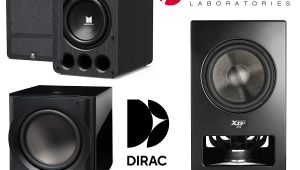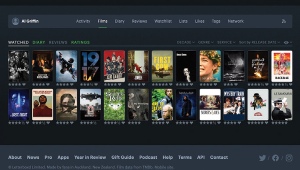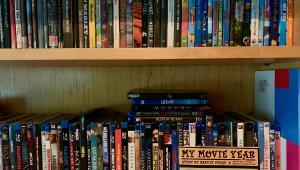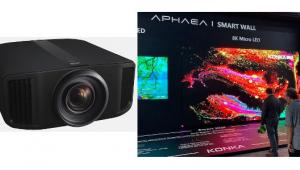Surprise, Surprise: Sometimes, Even In the A/V Biz, Old Is New Again

Let’s start with the Scandinavian-designed Opalum on-wall speakers. These are not like any other speaker system we’ve ever tested. Putting aside the modernistic highbrow design (featuring multiple small drivers set up as a point source), these are self-powered speakers, with built-in digital amplifiers that are driven by a single thin wire that combines the digital audio source signal and the required 24-volt power for the amps. In essence, you gain the advantages attendant to powered speakers—including optimized crossover and amp design—without the primary drawback, which is the need to run live power along with the signal wire. You’ll have to dive into Darryl Wilkinson’s review to learn how well the Opalums fared, but either way, you’ve got to admire the innovative thinking.
On the television front, Samsung’s F8500, the company’s best plasma TV to date, breaks new ground for the plasma category in terms of light output. For those with no choice but to watch TV in a bright room, that could make the difference in skipping an LCD in favor of plasma’s superior image quality. In cutting-edge 4K, Tom Norton reviewed Sony’s first UltraHD model in a “common” screen size: $7,000 for 65 inches diagonal versus $25,000 for the 84-inch model. But does four times the resolution of full HD really matter with conventionally sized TVs? Read Tom’s review to find out.
Then there’s the B&W Panorama 2 soundbar system, which offers what’s among the best sound quality we’ve heard from this still emerging (and surging) category, and the SVS Ultra bookshelf speakers, which, on their surface, do not appear to offer anything more than just solid engineering bolstered by good build quality. And yet, as Mark Fleischmann reports, the Ultras’s outstanding value is very much a product of today’s trend toward high-tech overseas manufacturing in China and cost-effective, Web-direct sales here at home. This combination is starting to change the face of audio retail sales in the U.S. and is making some very high-quality and good-sounding products accessible to more consumers (assuming they can live with a money-back guarantee in place of a live demo).
It goes on, of course: Pioneer’s latest budget receiver and Samsung’s $150 Blu-ray player both continue the trend toward network-connected products, each offering new ways to stream content from your personal media library or the Internet.
All of this is just my way of saying that, if you’ve been wondering what’s new in the staid old world of audio/video, the answer is: pretty much everything, even the stuff that isn’t new.
- Log in or register to post comments




































































